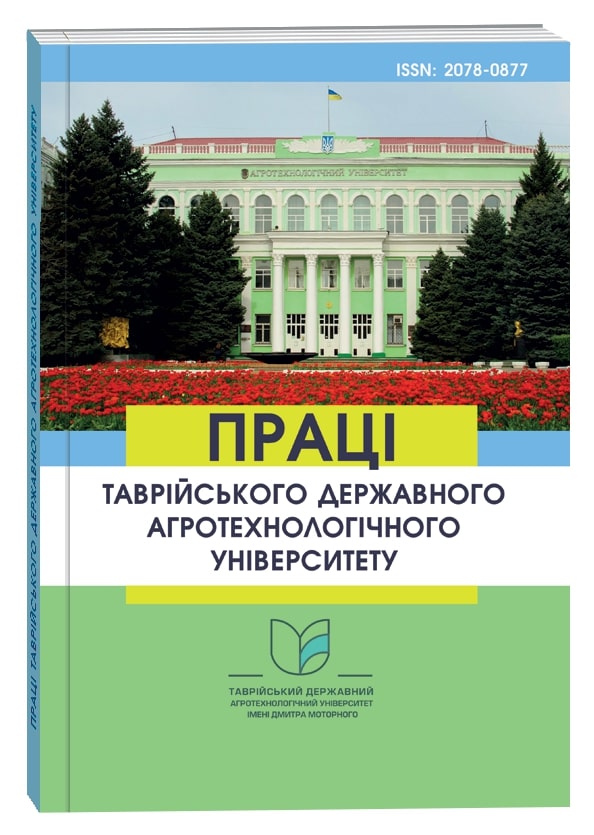МЕТОДИКА РОЗРАХУНКУ КУТА НАХИЛУ ФОТОЕЛЕКТРИЧНИХ ПАНЕЛЕЙ
Анотація
Генерація електроенергії за рахунок сонячних електростанцій значно зростає в усьому світі, тому вибір оптимального кута нахилу фотоелектричних модулів є важливою частиною проєктування сонячної електростанції. Це, своєю чергою, впливає на ефективність виробництва сонячної енергії, зменшуючи при цьому викиди парникових газів і знижуючи залежність від вичерпних видів палива, що використовуються на традиційних електростанціях, та спонукає до пошуку альтернативних способів виробництва електроенергії. Сьогодні сонячна енергетика стала одним із найвідоміших джерел виробництва електроенергії. Але варто пам'ятати, що кількість енергії, яку генерує фотоелектрична панель, напряму залежить від кількості вловленого сонячного випромінювання. Дане питання важливе як для домашніх сонячних електростанцій, так і для комерційних сонячних електростанцій.
Посилання
2. Yunus Khan T.M. Optimum location and influence of tilt angle on performance of solar PV panels. Journal of Thermal Analysis and Calorimetry. 2020. 141. 511–532. https://doi.org/10.1007/s10973-019-09089-5
3. Hua Y., He W., Liu P. Optimum tilt angles of solar panels: A case study for Gansu province, northwest China. Applied Solar Energy. 2020. 56. 388–396. https://doi.org/10.3103/S0003701X20050060
4. Portolan dos Santos I., Rüther R. Limitations in solar module azimuth and tilt angles in building integrated photovoltaics at low latitude tropical sites in Brazil. Renewable Energy. 2014. 63. 116–24. https://doi.org/10.1016/j. renene.2013.09.008
5. Dyadenchuk A. Simulation of solar element characteristics based on porous silicon. 2022 IEEE 4th International Conference on Modern Electrical and Energy System (MEES). 2022. 1–4. https://doi.org/10.1109/ MEES58014.2022.10005773.
6. Optimal Tilt Angle Determination for PV Panels Using Real Time Data Acquisition. URL: https://www.ncbi.nlm.nih.gov/pmc/articles/PMC7408049/ (дата звернення: 23.04.2025).
7. Rusheng T., Tong W.U. Optimum tilt angle for solar collectors used in China. Applied Energy. 2004. 79(3). 239–248. https://doi.org/10.1016/j.apenergy.2004.01.003
8. Thakur V., Chandel S.S. Maximizing the solar gain of a grid-interactive solar photovoltaic power plant. Energy Technology. 2013. 1. 1–8. https://doi.org/10.1002/ente.201300118
9. Herrera-Romero J.V. Estimation of the optimum tilt angle of solar collectors in Coatzacoalcos Veracruz. Renewable Energy. 2020. 153. 615–623. https://doi.org/10.1016/j.renene.2020.02.045
10. Halko S., Suprun O., Miroshnyk O. Influence of temperature on energy performance indicators of hybrid solar panels using cylindrical cogeneration photovoltaic modules. 2021 IEEE 2nd KhPI Week on Advanced Technology (KhPI Week), Kharkiv, Ukraine. 2021. 132–136. https://doi.org/10.1109/KhPIWeek53812.2021.9569975
11. Yadav P., Chandel S.S. Comparative analysis of diffused solar radiation models for optimum tilt angle determination for Indian locations. Applied Solar Energy. 2014. 50(1). 53–59. https://doi.org/10.3103/S0003701X14010137
12. Pandey C.K., Katiyar A.K. A comparative study of solar irradiation models on various inclined surfaces for India. Applied Energy. 2011. 88. 1455–1459. https://doi.org/10.1016/j.apenergy.2010.10.028
13. Halko S., Halko K. Research of electrical and physical characteristics of the solar panel on the basis of cogeneration photoelectric modules. Integración de las ciencias fundamentals y aplicadas en el paradigm de la sociedad post-industrial: Colección de documentos cientificos «ΛΌΓΟΣ» con actas de la Conferencia Internacional Cientifica y Prάctica, 24 de abril de 2020. Barcelona, España: Plataforma Europea de la Ciencia. 2020. 2. 39–44
14. Savchenko O., Miroshnyk O., Moroz O., Trunova I., Sereda A., Dudnikov S., Kozlovskyi O., Buinyi R., Halko S. Improving the Efficiency of Solar Power Plants Based on Forecasting the Intensity of Solar Radiation Using Artificial Neural Networks. 2021 IEEE 2nd KhPI Week on Advanced Technology (KhPIWeek), Kharkiv, Ukraine. 2021. 137–140. https://doi.org/10.1109/KhPIWeek53812.2021.9570009
15. Dudnikov S., et al. Methodological aspects of evaluating the effectiveness of using local energy systems with renewable sources. E3S Web Conf. 2020. 154. 07013. https://doi.org/10.1051/e3sconf/202015407013
16. Al_Issa H.A., et al. Correct Cross-Section of Cable Screen in a Medium Voltage Collector Network with Isolated Neutral of a Wind Power Plant. Energies. 2021. 14. 3026. https://doi.org/10.3390/en14113026
17. Halko S., Halko K., Suprun O., Qawaqzeh M., Miroshnyk O. Mathematical Modelling of Cogeneration Photoelectric Module Parameters for Hybrid Solar Charging Power Stations of Electric Vehicles. 2022 IEEE 3rd KhPI Week on Advanced Technology (KhPIWeek), Kharkiv, Ukraine. 2022 1–6. https://doi.org/10.1109/KhPIWeek57572.2022.9916397
18. Iegorov O., et al. A calculated determination and experimental refinement of the optimal value of the single-phase induction motor transformation ratio. Energetika. 2021. 67. 1–2. https://doi.org/10.6001/energetika.v67i1.4483
19. Komada P., et al. The incentive scheme for maintaining or improving power supply quality. Przeglad Elektrotechniczny. 2019. 95(5). 79–82. https://doi.org/10.15199/48.2019.05.20
20. Qawaqzeh M., Dudnikov S., Miroshnyk O., Moroz O., Savchenko O., Trunova I., Pazyi V., Danylchenko D., Halko S., Buinyi R. Development of algorithm for the operation of a combined power supply system with renewable sources. 2022 IEEE 3rd KhPI Week on Advanced Technology (KhPIWeek), Kharkiv, Ukraine. 2022. 1–4. https://doi.org/10.1109/KhPIWeek57572.2022.9916372
21. Trunova I. The perfection of motivational model for improvement of power supply quality with using the one- way analysis of variance. Naukovyi Visnyk Natsionalnoho Hirnychoho Universytetu. 2019. 6. 163–168. https://doi.org/10.29202/nvngu/2019-6/24
22. Guo M., Zang H.X., Gao S.Y., Chen T.J., Xiao J., Cheng L.X., Wei Z.N., Sun G.Q. Optimal tilt angle and orientation of photovoltaic modules using HS algorithm in different climates of China. Appl. Sci. 2017. 7. 1028. https://doi.org/10.3390/app7101028
23. Herrera-Romero J.V., Colorado-Garrido D., Escalante Soberanis M.A., Flota-Banuelos M. RETRACTED: Estimation of the optimum tilt angle of solar collectors in Coatzacoalcos, Veracruz, Renewable Energy. 2019. 153. 615–623.
24. Benghanem M. Optimization of tilt angle for solar panels: Case study for Madinah, Saudi Arabia. Appl. Energy. 2011. 88. 1427–1433.



